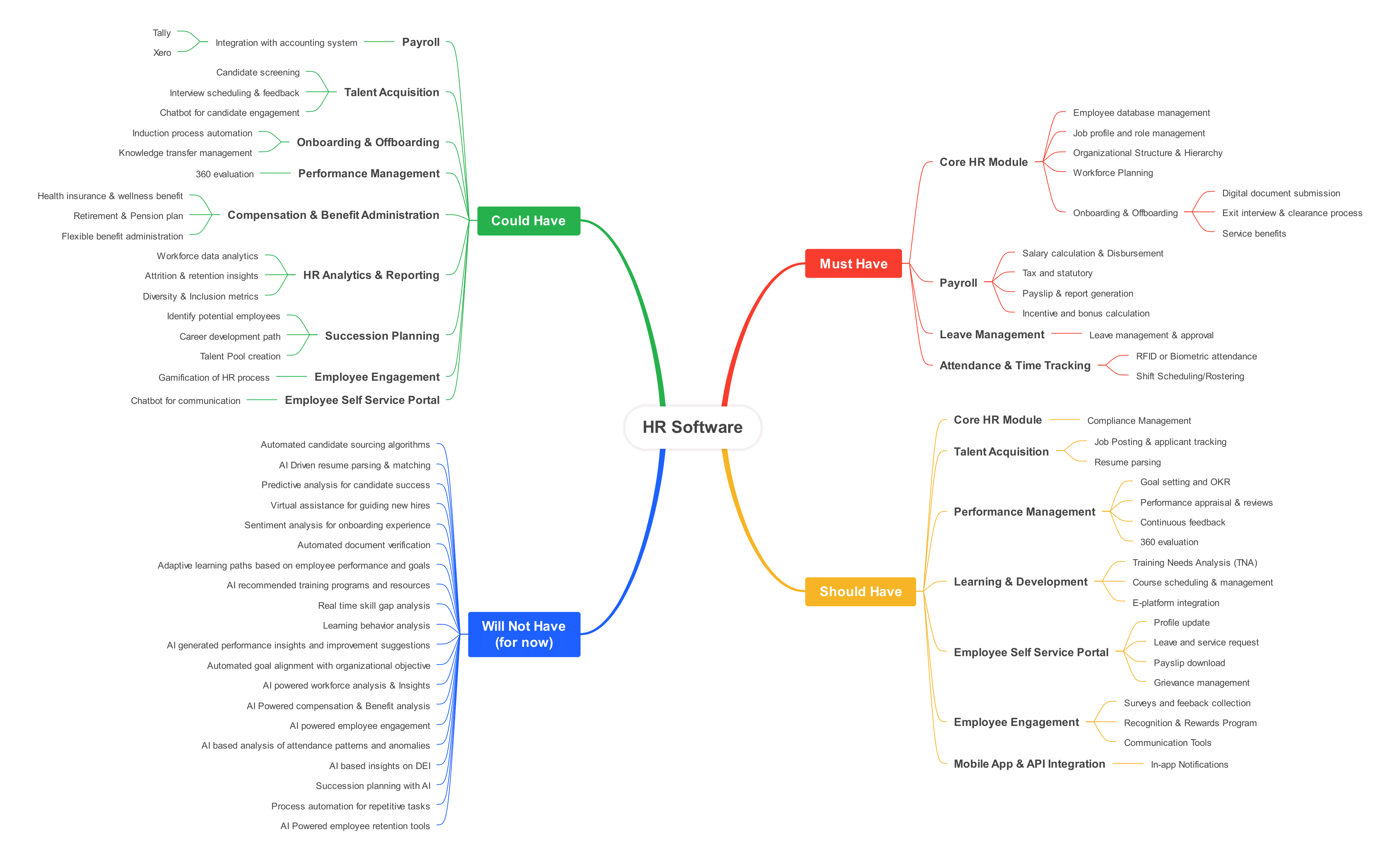HRMS Feature Roadmap
The Human Resource Management System (HRMS) is structured to efficiently handle comprehensive HR processes within an organization. The following mindmap represents the initial phase of our HRMS project, highlighting prioritized features categorized using the MoSCoW method (Must Have, Should Have, Could Have, and Will Not Have for now).
Feature Categorization
The features are grouped as follows:
- Must Have: Core functionalities essential for initial deployment and operation.
- Should Have: Important functionalities that significantly enhance the HR processes.
- Could Have: Desirable but non-critical functionalities, enhancing the system's capabilities.
- Will Not Have (for now): Features planned for future consideration beyond the initial phases.
Mindmap Overview

Key Modules
Core HR
- Organization Management and Functionality
- Organization Hirarchy Levels, Department, Designations, System roles and Persmission Management
- Employee database and profile management
Attendance Module
- Scheduling management
- Shift/Rooster management
- Attendance tracking and management
Leave Module
- Leave application and approval management
- Leave settings as the company wise leave policy
Payroll Module
- Payroll management
- Salary calculation and disbursement
- Payslip generation and reporting
Performance Management
- Goal setting and OKRs
- Performance appraisals and continuous feedback
Talent Acquisition
- Automated resume parsing and candidate screening
- Applicant tracking and interview scheduling
Onboarding & Offboarding
- Digital document submission
- Automated onboarding processes
Learning & Development
- Training needs analysis and course management
- Adaptive learning paths based on AI insights
Employee Engagement
- Surveys, feedback collection, and communication tools
- Recognition and rewards programs
Advanced Analytics & AI Integration
- Workforce data analytics and predictive insights
- AI-driven tools for employee retention and succession planning
This comprehensive roadmap ensures clarity and direction for stakeholders, helping prioritize development efforts effectively during the initial phase and future expansions.